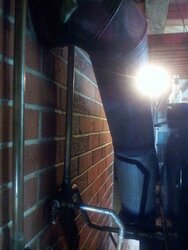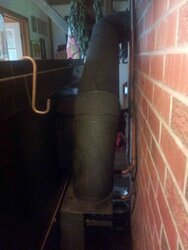Hey folks,
we have an old Pioneer princess brand Mennonite cook stove bought in the late 80's early 90's. It's a great stove and used to work very good.
Short version:
Basically we had a 9 inch square pipe, and now we have a 6 inch round pipe and the stove often won't draw adequately. By this I mean it fills the kitchen with smoke. Humid, hot days are the worst and happen often enough that I need to come up with a solution. Even in the winter when the fire box lid is open lots of smoke escapes.
I have recently read about draw collars and would maybe consider this. However, is there not a solution that does not require electricity?
Any advice would be appreciated!
Thanks in advance.
Long version:
This stove was the second stove put into this particular chimney and we were never able to set it up quite correctly. The stove pipe has an awkward angle which fed into a brick lined 9 inch clay (square) chimney which then rises approx. 25 feet. Years ago we had a chimney fire and the clay chimney was damaged. Last year we eventually shoved a 6 inch stove pipe down the chimney to replace the clay square pipe.
we have an old Pioneer princess brand Mennonite cook stove bought in the late 80's early 90's. It's a great stove and used to work very good.
Short version:
Basically we had a 9 inch square pipe, and now we have a 6 inch round pipe and the stove often won't draw adequately. By this I mean it fills the kitchen with smoke. Humid, hot days are the worst and happen often enough that I need to come up with a solution. Even in the winter when the fire box lid is open lots of smoke escapes.
I have recently read about draw collars and would maybe consider this. However, is there not a solution that does not require electricity?
Any advice would be appreciated!
Thanks in advance.
Long version:
This stove was the second stove put into this particular chimney and we were never able to set it up quite correctly. The stove pipe has an awkward angle which fed into a brick lined 9 inch clay (square) chimney which then rises approx. 25 feet. Years ago we had a chimney fire and the clay chimney was damaged. Last year we eventually shoved a 6 inch stove pipe down the chimney to replace the clay square pipe.




